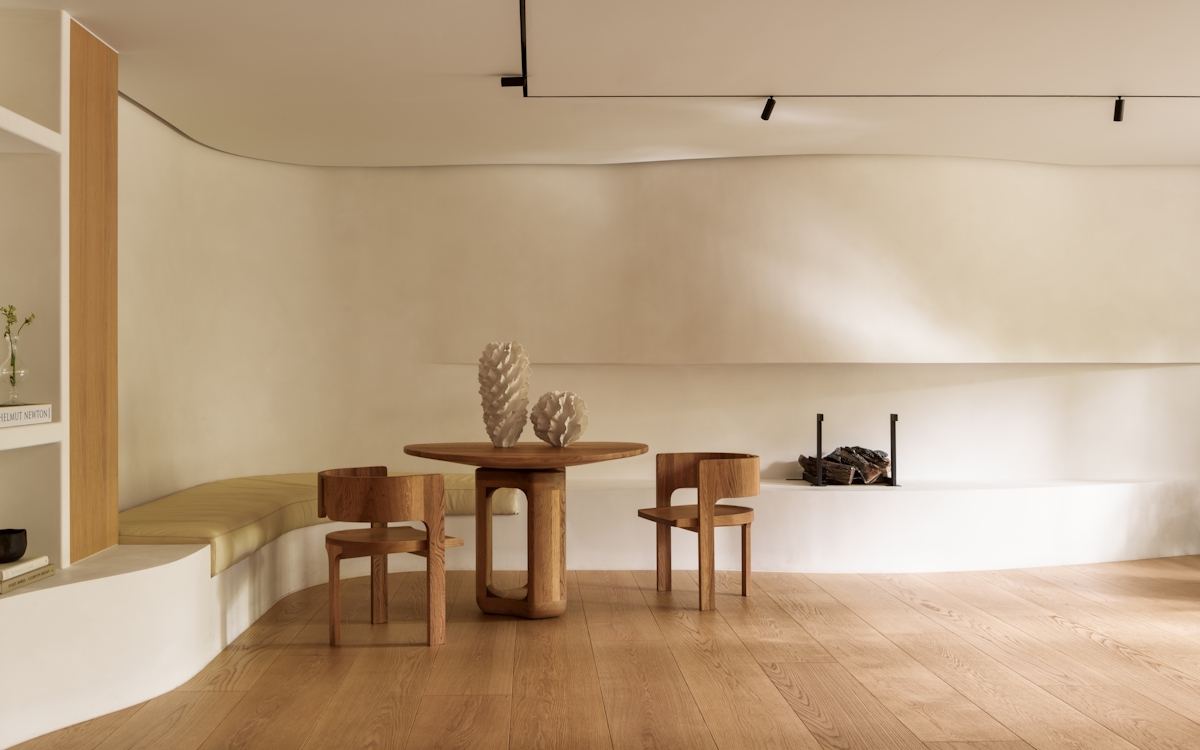Understated, pared-back, minimalist interior design is not solely an aesthetic choice, it’s a practice that demonstrates incredible rigour and focus in decoration decisions.

Minimalist Interior Design Defined
There’s more to minimalist interior design than meets the eye

For more inspiration
Alix Lawson on Conscious Minimalism
Discover the Trend: Japandi Design
But what is the true meaning of being a minimalist and how do you adhere to minimalist home decor in your own abode from hallway to bedroom?
What is Minimalist Interior Design?
Minimalist decor is, unsurprisingly, the antithesis to maximalist design where every element of your scheme is loud and bright in colour, awash with statement prints, and full to the rafters with dominant furniture forms and attention-grabbing accessories.
Minimalist style is its far quieter, laconic and sparse sibling. But that doesn’t mean to say it’s lacking in confidence. To the contrary, a minimalist interior is a self-assured depiction of design and personal preference. Its very essence is about focusing on a few, specifically selected items in a room—pieces chosen with deep consideration and conviction.
Minimalist in name, minimalist in nature, minimalistic design involves just one or two colours in the room, a strong leaning towards geometric shaped furniture and motifs, and multifunctional furniture—fewer pieces in the room mean that those which make the cut, need to work harder.
How to Create Minimalist Style: Room by Room
Minimalist design can be applied to various types of interior style, such as Japanese, modern and Scandinavian. Regardless of which aesthetic is your end goal, there are aspects that remain relevant across the board, as these minimalist room ideas show.
Minimalist Bedroom
A minimalist bedroom favours a low-lying bed frame without a headboard; it might be upholstered or timber, but it must be clean-lined and have no obvious ornamentation.
An understated seam detail, display of inlay or multi-total wood grain are examples of restrained decoration that may come through, however. Bedside furniture in minimalist bedroom design, be it cube cabinets or a floating shelf, is best at the same height as the bed—the fewer changes in height around the room, the better.
And lamp light could be in the form of integrated wall light or a single lamp. Wardrobes may be built-in, or instead, a single piece of storage furniture, such as a chest of drawers, won’t disrupt the minimalist room decor too greatly.
Minimalist Living Room
Minimalist living room ideas involve repeating the same furniture form around the room. A modern minimalist living room for example may feature a pair of cube armchairs that sit alongside an elongated, elegant sofa that shares the same arm height, low back and sharp contours. Talk of sharp angles doesn’t equate to lack of comfort.
Mirror that low-to-the-ground height and squared shape in the coffee table too—a lower height means it doesn’t demand attention and lets the eye find it in its own time. Any depictions of quiet confidence will cement a minimalist living room.
Minimalist Kitchen
Kitchen design is fundamental in creating a minimalist house interior, because it’s the room still regarded as the heart of the home. Achieve the desired moderation in your decorative choices in here, and it will serve to anchor your entire home.
A kitchen is the room where you’re most likely to see a combination of colours and materials, because of the melding of cabinets, flooring, tiles and appliances.
Try to stick to the two colour rule and no more than two core materials, such as timer and marble or polished concrete and black-treated metal. You’ll need to make sure that any appliances on show are available in either of your two shades and if you have any display crockery, it has big impact if that too subscribes to your palette.
Better still, plan your design with ample storage so that you have as little on your work surfaces and shelving as possible.
Minimalist Dining Room
A modern minimalist house with a dining room follows the same selections. Lacquered, glossy furniture with straightforward silhouettes is one possibility. Note, this doesn’t necessarily equate to design that’s unadventurous.
Contrasting different types of linear form can be very arresting indeed, such as the Guillaume Alan (who, in his words, “aspires to write a new vision of minimalism, always inspired by history”) dining set pictured. He combines different weights of straight lines in his renovation of a 19th century haussmannian edifice near the Trocadero in Paris, though blends them with a certain softness, which he describes: “strong lines, impeccable proportions balanced with douceur brought by curved lines of furniture and soft textures and palette.”
But if the minimalist architecture of the room is clean and uniform, you could see this as an invitation to include abstract and geometric chair design—providing it’s the same finish and materials as the table itself. This helps it to complement and contrast, abiding to the minimalist definition of not standing out too loudly.
Minimalist Bathroom
Minimalist house design encompasses every sort of washroom from en suites to family bathrooms. Here, be inspired by the simplicity of this Alix Lawson bathroom—minimalist living is of the open-plan school of thought. Keeping to few colours and materials is easiest in the bathroom where finishes can be used throughout as built-in cabinetry.
A minimalist home will favour larger format tiles, because there are fewer dividing lines and grouting that complicate the look. A continuous flow of the same material, such as concrete that glides from the wall to the floor —even the bathtub surround can be sculpted from it—keeps the movement sweeping and fluid. Or carrara marble, which is luxurious without superfluous ornamentation.
Minimalist Furniture
Minimalist houses have within them objects that have strong bone structure and no pretences. They are what they are—items of clear function, zero distraction and a serene sort of beauty. But what makes minimalist furniture most impactful is when all of the elements in the room work together.
A less-is-more sofa and footstool wouldn’t appear as compelling in their design narrative if they were put into a space with an abundance of colour, ornate lamp bases with pleated fabric shades and French doors out onto the garden. They need to be placed and viewed in the right context.
Minimalist Room Decor
As with any style of interior, the full scheme needs to sing from the same hymn sheet to reach its potential. A minimalist room therefore is likely to be painted in muted tones such as white, grey, and black and to boast oversized windows that let the light flood in. In terms of materials, the scope is broad.
Textured woods in combination with matte and polished stone are as well-received as perspex, chrome and glass—the only caveat being to not place more than three in the same room. Any artworks or sculptures are generally contemporary or abstract where not too many colours are used and the subject is stark and bold. And in its strictest sense, few cushions and throws will be used.
Any variations in texture are small in reference—the subtlety of the rest of the room means they’ll be detected and digested without difficulty. It’s one of the many beauties of authentic, minimal design—it lets every item in the room become the subject.
3 Minimalist Brands To Know
Highgate Home
Simplifying style and focusing on value, Highgate Home curates timeless furniture collections for the most welcoming of homes. If you're after streamlined pieces, this is the brand for you.
Ethnicraft
Ethnicraft channels an honest aesthetic. With its pared back silhouettes, sustainable materials and thoughtful design practices, the Belgian brand is the height of considered design.












